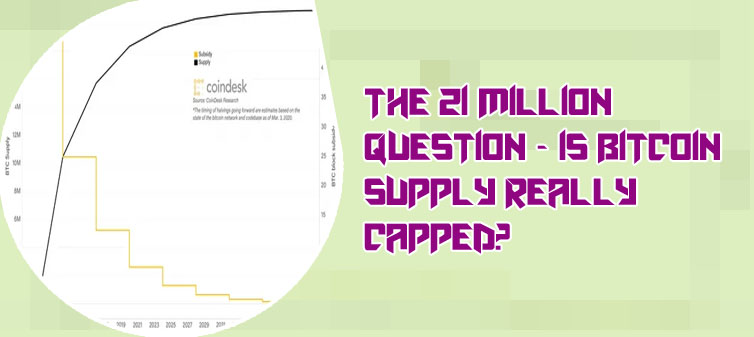
Bitcoin supply limit
Privacy and fungibility
The main issue with crypto-currencies is the lack of regulation. While it was a very important advantage for first users, it prevents many investors or businesses from entering the market today. Second, the ecological footprint of cryptos is disastrous. As of early 2021, Bitcoin’s annual electricity consumption puts it at the edge of being the equivalent of a top 30 country. For example, in one year, it uses around the same electricity as the entire population of Pakistan (c.217m people)! Is there a cap on bitcoin A hard cap is a parameter a blockchain project’s community strictly monitors. If any situation arises in which they have to bypass this limit, they have to change the cryptocurrency’s underlying parameters and create a new crypto coin.
Bitcoin cap limit

Marketing cookies are used by third-party advertisers or publishers to display personalized ads. They do this by tracking visitors across websites. Related Articles “It’s not a given that bitcoin has to stay at that 21 million hard limit,” said EY’s Brody (who, it should be noted, is building enterprise applications on top of rival chain ethereum). “There is a governance mechanism to permit changes in bitcoin – if the community agrees that would be good.”
(About) 21 million bitcoins
Note that the target difficulty is independent of the number of transactions or the value of transactions. This means that the amount of hashing power and therefore electricity expended to secure bitcoin is also entirely independent of the number of transactions. Bitcoin can scale up, achieve broader adoption, and remain secure without any increase in hashing power from today’s level. The increase in hashing power represents market forces as new miners enter the market to compete for the reward. As long as enough hashing power is under the control of miners acting honestly in pursuit of the reward, it is enough to prevent “takeover” attacks and, therefore, it is enough to secure bitcoin. Projected Bitcoins Short Term Numerous world records have now been set on Bitcoin’s original protocol including regularly surpassing millions of transactions a day, the largest blocks (+4GB), largest NFT (1GB) and the lowest environmental impact of any proof-of-work (POW) chain.
Why is there a limited amount of bitcoin
Confirm Your Subscription 21 Million Bitcoins. Will They All Be In Circulation One Day? Estimates suggest that between 3 to 4 million bitcoins are potentially lost forever. This means that out of the 21 million maximum supply, only around 17–18 million bitcoins are effectively in circulation. This realization underscores Bitcoin’s scarcity, making it even more valuable. The concept of lost coins is crucial in understanding Bitcoin’s effective circulating supply. While the theoretical maximum supply of Bitcoin is 21 million, the actual number of bitcoins available for use is significantly lower due to these lost coins. This inherent scarcity, combined with increasing demand, is a fundamental driver of Bitcoin’s value proposition.